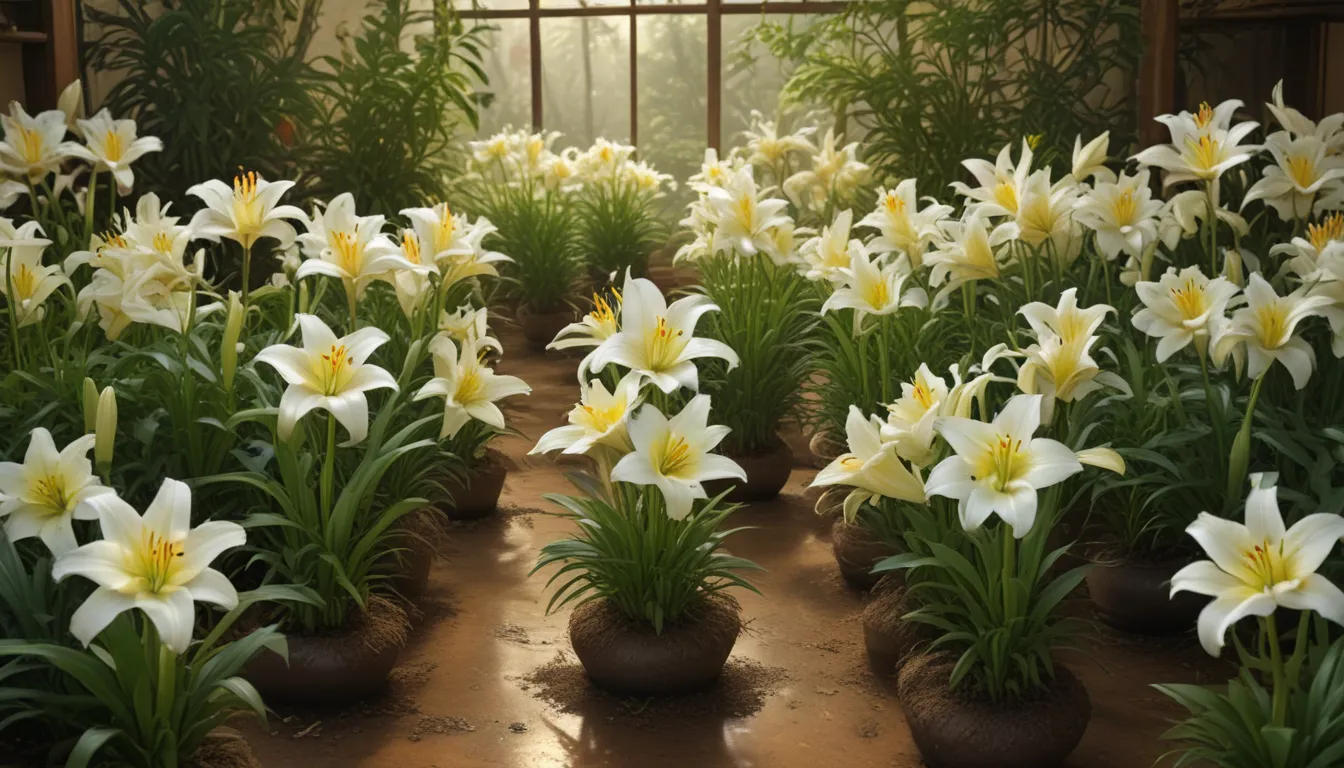A Complete Guide on Transplanting and Caring for Easter Lilies After Blooming

Are you a fan of the beautiful Easter lilies with their trumpet-like white flowers and heady fragrance? These lovely flowers can bring a touch of spring indoors, but did you know that you can also transplant them into your garden after they finish blooming?
In this article, we will provide you with all the information you need to successfully transplant and care for your Easter lilies after blooming. From basic care to planting in the garden or containers, we’ve got you covered. Let’s dive in!
What You’ll Learn
- Easter Lily Basics
- Care After Flowering
- Transplanting into the Garden
- How to Grow Them
- Caring for Lilies in Containers
Easter Lily Basics
Easter lilies, scientifically known as Lilium longiflorum, are popular potted flowers sold in shops during the spring season. These flowers are native to Japan and Taiwan and belong to the fifth division of the Royal Horticultural Society’s Lily Register.
The trumpet-shaped flowers of Easter lilies come in pure white to pink colors and have a fragrant aroma. They typically bloom in the summer months when planted outdoors and are attractive to pollinators like bees and butterflies.
In your garden, you can plant Easter lilies in borders, pathways, or containers, where they can thrive in full sun to part shade locations with well-draining soil. These perennial bulbs are hardy in USDA Zones 4 to 8 and can add beauty and fragrance to your outdoor space.
Care After Flowering
After your Easter lilies finish blooming indoors, you can transplant them outdoors to enjoy them again in your garden. Here are some tips for caring for your lilies after flowering:
- Deadhead the plants by removing the flower stems close to the main stalk.
- Move the plants to a bright location with indirect sunlight and maintain temperatures between 65 and 75°F.
- Keep the soil lightly moist and feed the plants every two weeks with a liquid houseplant fertilizer.
- Transplant outdoors in May when the soil temperatures have warmed to 65°F.
Transplanting into the Garden
Before planting your Easter lilies in the garden, make sure to harden off the plants to help them acclimate to the outdoor conditions. Here’s how you can transplant your lilies into the garden:
- Select a full sun to part shade location with well-draining soil.
- Prepare the planting site by loosening the soil and adding compost or well-rotted manure.
- Plant the bulbs at the same depth as in the pot and water gently to settle them in place.
- Water regularly to keep the soil lightly moist throughout the growing season.
How to Grow Them
After transplanting your Easter lilies, you may notice the leaves and stems turning brown and dying back. This is normal, and new growth will emerge from the bulbs within a few weeks. Here’s how you can grow your lilies successfully:
- Remove dead plant material with clean shears.
- Feed the plants with a balanced fertilizer when new growth reaches three inches.
- In colder regions, provide winter mulch to protect the bulbs from freeze/thaw cycles.
Caring for Lilies in Containers
If you prefer to plant your Easter lilies in containers, here are some tips for caring for them:
- Use pots with drainage holes and well-draining soil.
- Keep the soil lightly moist and provide winter protection in cold regions.
- Move the containers back outdoors in spring after the danger of frost has passed.
Trumpets of Delight
Easter lilies are a delightful addition to any garden with their beautiful flowers and pleasant fragrance. By following the tips and guidelines provided in this article, you can successfully transplant and care for your Easter lilies after blooming.
Do you have any tips or tricks for using potted Easter lilies in your garden? Share your thoughts in the comments below!
For more information on growing lilies, check out these informative guides:
- How to Plant and Grow Lilies
- How to Overwinter Lilies
Now that you have the knowledge to care for your Easter lilies, you can enjoy their beauty for many seasons to come. Happy gardening!





